Experimental Study of Irregular Wave Reflection by a Perforated Caisson Breakwater Under Wave Overtopping Conditions
LIUXiao, and LIU Yong
Experimental Study of Irregular Wave Reflection by a Perforated Caisson Breakwater Under Wave Overtopping Conditions
LIUXiao, and LIU Yong*
Shandong Provincial Key Laboratory of Ocean Engineering, Ocean University of China, Qingdao 266100, China
Thecharacteristics of irregular wave reflection by a perforated caisson breakwater under wave overtopping conditions were investigated using physical model tests. The effects of various parameters, especially the mean overtopping discharge that was mainly determined by the relative crest freeboard, on the reflection coefficient of perforated caisson breakwater were analyzed using experimental data. The results showed that the wave overtopping occurrence had no appreciable effect on the reflection coefficient when the mean overtopping discharge was less than 0.2m3(ms)?1. Under the wave overtopping condition, the reflection coefficient of the perforated caisson breakwater in this study was reduced by 20%–50% compared with that of the non-perforated caisson breakwater. A predictive formula of the reflection coefficient for perforated caisson breakwaters in terms of relative water depth, relative chamber width, and porosity of the caisson front wall, was developed for practical engineering design.
perforated caisson; model test; reflection coefficient; wave overtopping; predictive formula
1 Introduction
Reducing wave reflection by structures is of signifi- cance in coastal engineering as the reflected waves affect the ship berthing, intensify the foundation scour, and in- crease wave forces on the structures. A perforated caisson breakwater, having a wave chamber between a perforated front wall and a solid back wall, was found to be efficient in dissipating wave energy and thus effectively suppressing the wave reflection. Since the perforated caisson break- water was firstly proposed by Jarlan (1961), some studies on the hydrodynamic performance of perforated caissons have been reported.
Hydraulic model tests were conducted to study the wave reflection performance of perforated caissons. Tanimoto(1976) conducted earlier model tests to study the ir- regular wave reflection by perforated caisson breakwaters. Chen(2002) experimentally investigated the reflec- tion coefficient of regular waves by perforated caissons and gave an empirical predictive formula for the reflec- tion coefficient. Lee and Shin (2014a) performed labora- tory tests to study irregular wave reflection by partially perforated caisson structures with single and double cham- bers. Neelamani(2017) conducted a series of model tests to assess the reflection coefficient of slotted vertical barriers with irregular waves and found that the slotted barriers performed better in suppressing the wave reflec-tion than a sloping rubble mound breakwater. Recently, Franco(2019) presented regular and random waves tests on the perforated vertical wall caisson to evaluate the reduction in the wave reflection caused by various perfo- rations.
Analytical models have also been developed for calcu- lating the reflection coefficients of perforated caissons. Tanimoto and Yoshimoto (1982) theoretically studied the reflection coefficients of partially perforated caissons, and their calculation results agreed well with experimental data. Suh(2001) conducted a theoretical analysis and model test to study the reflection characteristic of irregular waves by perforated caisson breakwaters. Based on the matched eigenfunction expansion method, Li(2002, 2003) de- veloped analytical solutions to examine the reflection coef- ficients of obliquely incident waves by single- and double-chamber perforated caisson breakwaters. By introducing a periodic boundary condition, Liu(2007, 2012) de- veloped analytical solutions for oblique wave scattering by partially perforated caissons and multi-chamber perforated caissons with partition walls.
In addition to experimental and analytical studies, some researchers have studied the reflection coefficients of per- forated caissons by numerical simulations. Takahashi(2003) developed a volume of the fluid numerical model to evaluate the reflection coefficient of perforated caissons.Meringolo(2015) and Tang(2017) adopted the smoothed particle hydrodynamics model to calculate the reflection coefficients of partially perforated caissons. Wang(2019) simulated wave interaction with a perforated caisson breakwater, and carefully examined the reflection coefficient and fluid velocity near the breakwater. By using the open-source computational fluid dynamics tool Open- Foam?, Tagliafierro(2020) numerically investigated the efficiency of the multi-chamber perforated caisson in reducing the reflection coefficient.
Besides the wave reflection, wave overtopping is another significant issue for the engineering design of coastal struc- tures. Studies on wave overtopping in perforated caissons were based on model tests, and empirical formulas of the wave overtopping discharges were developed. Franco(1994) and Franco and Franco (1999) experimentally ex- amined the wave overtopping performance of the perfo- rated caissons with irregular waves, and put forward a relationship between the mean overtopping discharge and the relative crest freeboard (the ratio of the crest freeboardto the significant wave height). Based on experimental data in the irregular waves, Liu(2018) developed a pre- dictive formula for the mean overtopping discharge of the perforated caissons, which included the effects of the rel- ative crest freeboard, porosity of the caisson front wall, and relative water depth. Moreover, some experimental stud- ies for both the wave overtopping discharge and the reflec- tion coefficient of perforated caisson breakwaters (Tani- moto, 1976; McBride, 1995; Di-Risio, 2009; Lee and Shin, 2014b) were also performed. These studies showed that perforating the caisson front wall can effectively reduce the reflection coefficient and overtop- ping discharge. However, the reflection coefficient and over- topping discharge of perforated caissons were independ- ently examined in these studies. Under the wave overtop- ping conditions, the variations in the reflection coefficient by the perforated caissons are still unclear. The major ob- jective of this study is to clarify whether/how the reflection coefficient of perforated caissons could be affected by wave overtopping.
In this study, based on experimental data, reflection co-efficients of the perforated caissons for irregular waves are examined under the wave overtopping condition. In the next section, experimental tests for irregular wave reflec- tion and overtopping in perforated caissons are briefly introduced. In Section 3, the effect of wave overtopping on the reflection coefficient of the perforated caissons is analyzed. The ability of the perforated caissons for sup- pressing the wave reflection under the wave overtopping condition is also estimated. In Section 4, a predictive for- mula for reflection coefficients of the perforated caissons is developed for practical engineering design, based on the analysis of influencing factors. Finally, the main con- clusions of this study are summarized.
2 Experimental Tests
Physical model tests with irregular waves were con- ducted in a wave flume (60.0m×3.0m×1.5m) in Shan- dong Provincial Key Laboratory of Ocean Engineering, Ocean University of China. A sketch of the experimental setup is shown in Fig.1. On one side of the flume, a pis- ton-type wavemaker was equipped to generate irregular waves. On the opposite side of the flume, a porous wave absorption slope was installed to eliminate the incident wave energy. A 1:22.5 slope was set at 30.5m from the wavemaker. The perforated caisson models comprising the caisson structure and a rectangular upper structure were installed on a rubble mound foundation, 6.0m from the slope. Three wave gauges (No.1–No.3) were placed in front of the model along the wave flume to record the time series of wave surface elevations. As shown in Fig.1, the three wave gauges were separated by two intervals of 0.45m and 0.68m, and the horizontal distance between gauge No.3 and the front toe of the foundation was 1.0m. Be- hind the perforated caisson models, a wave tank was fixed to collect the water overtopping the perforated caissons.

Fig.1 Sketch of the experimental setup.
The model scale used in the experimental tests was=1:40. The water depths in front of the rubble mound foundation and inside the wave chamber weres=0.45m and=0.35m, respectively. The tests were conducted for three significant wave periodss=1.12s, 1.31s, and 1.50s, each including four significant wave heightss=0.06m, 0.08m, 0.10m, and 0.12m. The JONSWAP spectrum with a peak enhancement factor of 3.3 was used in ex- perimental tests to produce expected irregular waves. The typical results of the measured and target wave spectrums fors=0.06m,s=1.12s, ands=0.12m,s=1.50s are shown in Fig.2, where themeasured results accorded well with the target calculations. The perforated caisson mod- els had two wave chamber widthsc=0.3m and 0.4m (crefers to the spacing between the perforated front wall and the impermeable rear wall). The porosities of the caisson front wall were=20% and 35%. The crest free- board heightc(the spacing between the still water level and the top of the rectangular upper structure) was 0.07m, 0.095m, 0.115m, and 0.13m. For comparing with the perforated caissons, the non-perforated caissons (=0) with various crest freeboards were also examined in the model tests. All experimental conditions are listed in Ta- ble 1, wheresandsare respectively the wavelengths in front of the rubble mound foundation and inside the wave chamber; and both values were calculated by the linear water wave dispersion relation.


Fig.2 Comparisons of the measured and target wave spectrums.

Table 1 Experimental conditions of wave reflection by perforated caissons
3 Effect of Wave Overtopping on the Reflection Coefficient
As wave overtopping can significantly influence the function and even structure safety, tolerable limits for wave overtopping discharge should be considered in practical engineering design. By considering the structural safety of the caisson breakwater, the value of 0.2m3(ms)?1was recommended as the tolerable mean overtopping discharge in Franco(1994). Then, the corresponding tolerable mean overtopping discharge in the present experimental tests(=1:40) was 7.9×10–4m3(ms)?1. In the present model tests, most of the mean overtopping discharge above the perforated caissons were less than 7.9×10–4m3(ms)?1, which were within the tolerable mean overtopping dis- charge. Under the experimental conditions in this study, the variations of the reflection coefficient of perforated cais- sons are discussed in this section.
Previous studies (Franco, 1994; Liu, 2018) have shown that the mean overtopping discharge above the perforated caissons was mainly affected by the rela-tive crest freeboardc/s. Thus, the effect of wave over- topping on the reflection coefficient can also be repre- sented by the effect of the relative crest freeboard. In Fig.3,the experimental results of the mean overtopping discharge(in the model test scale) above the perforated caissons are plotted as the function of the relative crest freeboard. To show the reflection coefficient variations under the wave overtopping conditions, the experimental results of the re- flection coefficientrfor the perforated caissons are also plotted. With the increasing relative crest freeboard, the mean overtopping discharge decreases significantly; how- ever, the reflection coefficient has no appreciable change. That is to say, the effect of wave overtopping on the re- flection coefficient is unnoticeable in the present experi- mental conditions,, the maximum mean overtopping discharge is less than 7.9×10–4m3(ms)?1.
For the non-perforated caissons, the variations of the mean wave overtopping dischargenand the reflection coefficientrnagainst the relative crest freeboard at vari- ous wave periods are shown in Fig.4. Note that due to friction losses in laboratory experiments, the reflection coefficient is less than unity for non-perforated caissons. When the relative crest freeboard increases from 0.58 to 1.1, the reflection coefficient of non-perforated caissons slightly increases from 0.85 to 0.9. While the relative crestfreeboard is greater than 1.1, the corresponding mean over- topping discharge is less than 5×10–4m3(ms)?1and the values of the reflection coefficient are near 1.0.
According to the above analysis, the relative crest free- board has a significant effect on the mean overtopping dis- charge above the perforated caissons. However, wave over- topping has no appreciable effect on the reflection coeffi- cient of perforated caissons when the mean overtopping discharge is less than 7.9×10–4m3(ms)?1(0.2m3(ms)?1on the prototype scale).
To further estimate the ability of the perforated caissons for suppressing the wave reflection under the wave over- topping conditions, the reduction ratioof the reflection coefficient is defined as
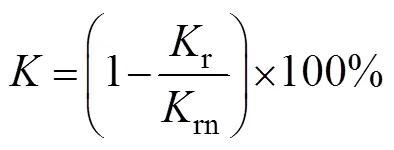
where,randrndenote the reflection coefficient of the perforated and the non-perforated caissons, respectively, corresponding to the experimental results in Figs.3 and 4.
Fig.3 Variations in the mean overtopping discharge and the reflection coefficient against the relative crest freeboard of the perforated caissons.
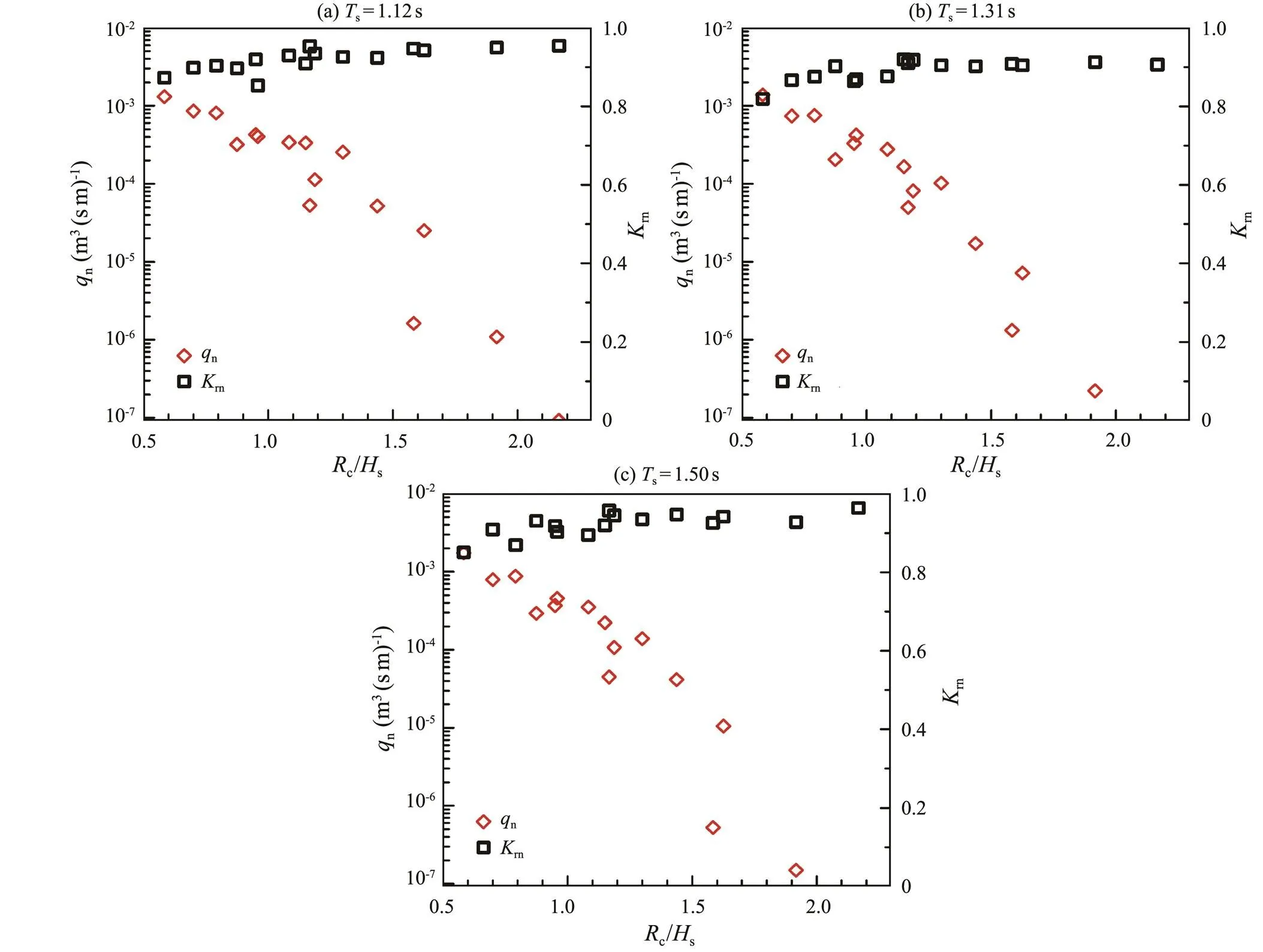
Fig.4 Variations in the mean overtopping discharge and the reflection coefficient against the relative crest freeboard of the non-perforated caissons.
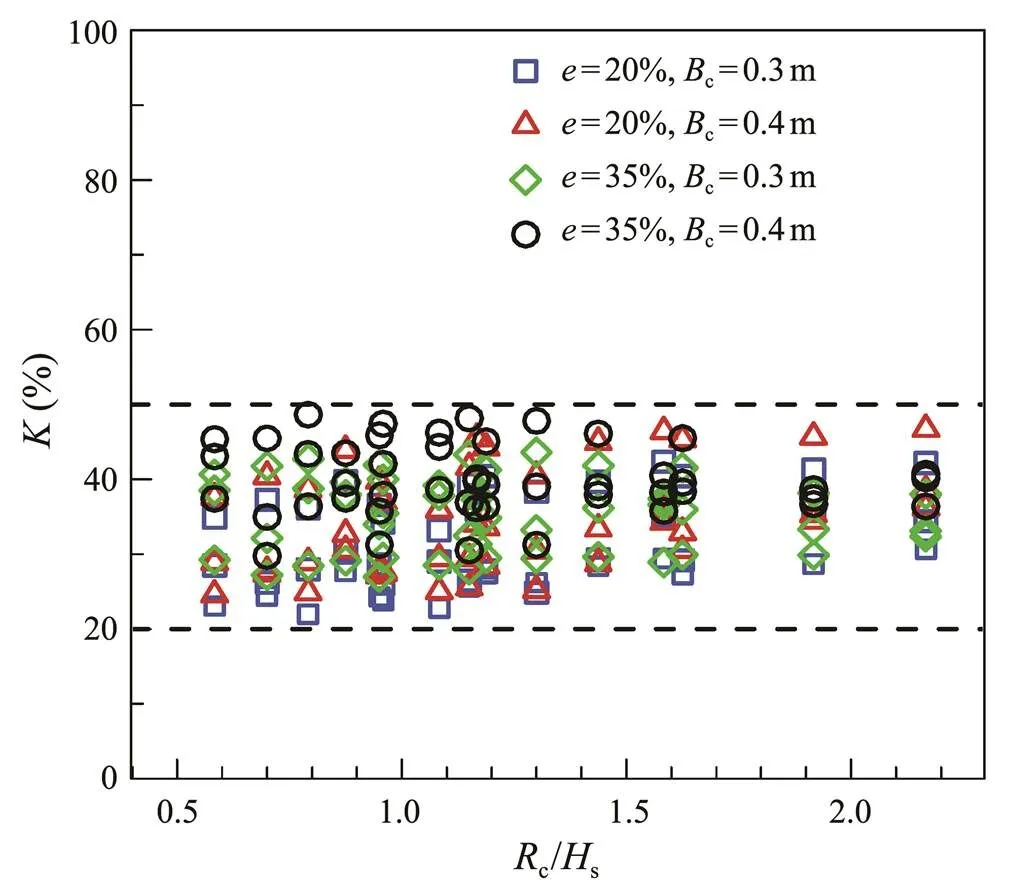
Fig.5 Reduction ratios of the reflection coefficient be- tween the perforated and non-perforated caissons.
4 Predictive Formula of the Reflection Coefficient
As the relative crest freeboard has no appreciable effect on the reflection coefficient of the perforated caissons, the remaining influencing parameters on the reflection coef- ficient can include the relative water depths/s, the rela- tive wave chamber widthc/s, the wave steepnesss/sand the porosityof the caisson front wall. Then, the re- flection coefficient of perforated caisson can be written as
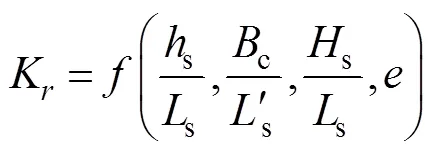
In the following analysis, typical experimental results are presented to investigate the effect of various parame- ters on the reflection coefficient.
Fig.6 shows the variation of the reflection coefficientthe relative water depth at=20% andc=0.3m. As shown in this figure, the reflection coefficient decreases first and then increases with increasing relative water depth. For the same relative water depth, the reflection coeffi- cient values are almost the same at various wave heights or crest freeboards. This variation under the same relative water depth is consistent with the preceding analysis that the relative crest freeboard has no appreciable effect on the reflection coefficient.
Fig.6 Variation of the reflection coefficientthe relative water depth at=20% andc=0.3m.
Fig.7 shows the variation of the reflection coefficientthe relative wave chamber width at=35%. The total variation of the reflection coefficient shows a fluctu- ated change when the relative wave chamber width ranges from 0.12 to 0.24. For the same wave chamber width, the reflection coefficient first decreases and then increases with increasing relative wave chamber width, which repre- sents the effect of the wave period on the reflection coef- ficient.
Fig.8 shows the reflection coefficient variationthe wave steepness at=35% andc=0.3m. In this fig- ure, when the wave period is fixed, the reflection coeffi- cient only slightly changes with increasing wave steep- ness. In comparison with the relative water depth and the relative wave chamber width, the wave steepness effect on the reflection coefficient is not notable.
The reflection coefficients for the perforated caissons with different porosities of 20% and 35% are compared in Fig.9. Most of the data fall below the line=. The re- flection coefficients of perforated caissons at=35% are less than those at=20% in the present model tests. Then, the perforated caissons with a porosity of 35% can dissi- pate more incident wave energy and lead to a smaller reflection coefficient.
Considering the above analysis, the effects of relative wave chamber widthc/s, relative wave depths/sand the porosityof the caisson front wall should be consid- ered when estimating the reflection coefficient of the per- forated caissons. By considering all the present experi- mental results, a predictive formula for the reflection co- efficient of the perforated caissons is developed:


where the wave steepnesss/Land the relative crest freeboardc/sare not incorporated due to their negligi- ble effects on the reflection coefficient. The calculation re- sults of Eq. (3) and the corresponding experimental re- sults are compared in Fig.10. Most of the data fall be- tween the two dotted lines of=(1±10%), and the cal- culation and experimental results are in reasonable agree- ment with a correlation coefficient of 0.84. Whens/s=0.16–0.25,c/s=0.12–0.24,=20%–35%and the mean overtopping discharge is less than 0.2m3(ms)?1, Eq. (3) can be used to predict the reflection coefficient of the perforated caissons.

Fig.7 Variation of the reflection coefficient versus the relative wave chamber width at e=35%.

Fig.8 Variation of the reflection coefficient versus the wave steepness at e=35% and Bc=0.3m.

Fig.9 Comparison of reflection coefficients between per- forated caissons with different porosities of e=20% and 35%.
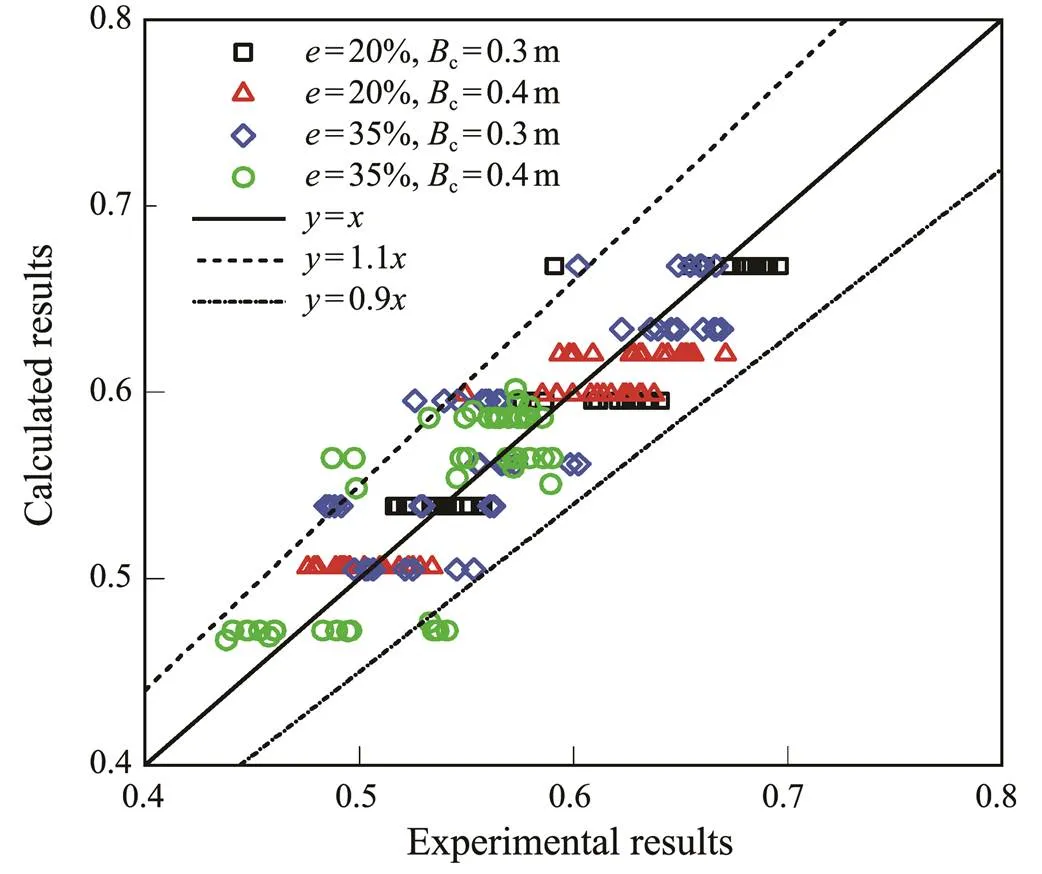
Fig.10 Comparison of the reflection coefficient between the calculation and experimental results.
5 Conclusions
Experimental tests were conducted to investigate the wave reflection characteristics of the perforated caissons under the wave overtopping condition. The experimental results showed that the perforated caissons could effec- tively suppress the wave reflection even under wave over- topping conditions. Perforating the caisson front wall can reduce the reflection coefficient by 20%–50%. The re- flection coefficient of the perforated caisson with 35% porosity was less than that with 20% porosity. Wave over- topping had no significant effect on the reflection coeffi- cient when the mean overtopping discharge was less than0.2m3(ms)?1. Thus, in the theoretical analysis and engi- neering design of perforated caissons, one can neglect the effect of smaller wave overtopping discharge on the re- flection coefficient.
A predictive formula for the reflection coefficient of per- forated caissons was developed, which included the affect- ing parameters of the relative wave depth, the relative wave chamber width, and the porosity of the caisson front wall. The calculation results of the predictive formula are in rea- sonable agreement with the experimental data, and they should be valuable for practical engineering design.
Acknowledgements
This study was supported by the National Natural Sci- ence Foundation of China (Nos. 52001294 and 51725903), and the Taishan Scholar Program of Shandong Province (No. ts20190915).
Chen, X., Li, Y., Sun, D., and Chen, R., 2002. Experimental study of reflection coefficient and wave forces acting on per- forated caisson., 21 (3): 451-460.
Di-Risio, M., Beltrami, G.-M., De-Girolamo, P., Noli, A., and Ievolella, G., 2009. Investigation on overtopping and reflection performance of perforated caisson breakwaters: The Ponza har- bour case. In:. Franco, L.,, eds., World Scientific, 1562-1573.
Franco, C., and Franco, L., 1999. Overtopping formulas for cais-son breakwaters with non-breaking 3D waves., 125 (2): 98-108.
Franco, L., Cecioni, C., Bellotti, G., and Lykke Andersen, T., 2019. Laboratory tests on the reflection coefficient of a perforated caisson.Hannover, 253-262.
Franco, L., De Gerloni, M., and Van der Meer, J. W., 1994. Wave overtopping at vertical and composite breakwaters.. ASCE, 1: 1030-1045.
Goda, Y., and Suzuki, Y., 1976. Estimation of incident and re- flected waves in random wave experiments.Hawaii, 828-845.
Jarlan, G. E., 1961. A perforated vertical wall breakwater., 41 (486): 394-398.
Lee, J. I., and Shin, S., 2014a. Experimental study on the wave reflection of partially perforated wall caissons with single and double chambers., 91: 1-10.
Lee, J. I., and Shin, S., 2014b. An experimental study on the hydraulic performance of wharf structure with plain and par- tially perforated walls., 7 (5): 39-49.
Li, Y. C., Dong, G. H., Liu, H. J., and Sun, D. P., 2003. The reflection of oblique incident waves by breakwaters with dou- ble-layered perforated wall., 50 (1): 47-60.
Li, Y. C., Liu, H. J., Teng, B., and Sun, D. P., 2002. Reflection of oblique incident waves by breakwaters with partially-per- forated wall., 16 (3): 329-342.
Liu, X., Liu, Y., Li, H. J., Wang, X. Y., and Zhao, Y., 2018. Ex- perimental study of mean overtopping discharge at perforated caissons for non-impulsive waves., 61 (5): 83-95.
Liu, Y., Li, Y. C., and Teng, B., 2007. The reflection of oblique waves by an infinite number of partially perforated caissons., 34 (14-15): 1965-1976.
Liu, Y., Li, Y. C., and Teng, B., 2012. Interaction between ob- liquely incident waves and an infinite array of multi-chamber perforated caissons., 74 (1): 1-18.
McBride, M. W., Allsop, N. W. H., Besley, P., Colombo, D., and Madurini, L., 1995. Vertical walls and low reflection alterna- tives: Results of wave flume tests. HR Wallingford, Report IT 417.
Meringolo, D. D., Aristodemo, F., and Veltri, P., 2015. SPH nu- merical modeling of wave-perforated breakwater interaction., 101: 48-68.
Neelamani, S., Al-Salem, K., and Taqi, A., 2017. Experimental investigation on wave reflection characteristics of slotted ver- tical barriers with an impermeable back wall in random wave fields., 143 (4): 06017002.
Suh, K. D., Choi, J. C., Kim, B. H., Park, W. S., and Lee, K. S., 2001. Reflection of irregular waves from perforated-wall cais- son breakwaters., 44 (2): 141-151.
Tagliafierro, B., Crespo, A. J. C., González-Cao, J., Altomare, C., Sande, J., Pe?a, E.,, 2020. Numerical modelling of a multi-chambered low-reflective caisson., 103: 102325.
Takahashi, S., Kotake, Y., Fujiwara, R., and Isobe, M., 2003. Performance evaluation of perforated-wall caissons by VOF numerical simulations.. Cardiff, 1364-1376.
Tang, X., Jiang, F., Chen, H., Chen, R., Hao, D., and Zhang, X., 2017. Numerical analysis of the hydrodynamic performance of perforated caissons using the revised smooth particle hydro-dynamics method., 231 (3): 768-781.
Tanimoto, K., and Yoshimoto, Y., 1982. Theoretical and experi- mental study of reflection coefficient for wave dissipating caisson with a permeable front wall.,21 (3): 44-77 (in Japanese).
Tanimoto, K., Haranaka, S., Takahashi, S., Komatsu, K., Todoroki, M., and Osato, M., 1976. An experimental investigation of wave reflection, overtopping and wave forces for several types of breakwaters and sea walls.. Japan, No. 246 (in Japanese).
Wang, D. X., Dong, S., and Sun, J. W., 2019. Numerical model- ing of the interactions between waves and a Jarlan-type cais- son breakwater using OpenFOAM., 188: 106230.
March 1, 2021;
May 7, 2021;
May 27, 2021
? Ocean University of China, Science Press and Springer-Verlag GmbH Germany 2022
. Tel: 0086-532-66783717
E-mail: liuyong@ouc.edu.cn
(Edited by Xie Jun)
 Journal of Ocean University of China2022年4期
Journal of Ocean University of China2022年4期
- Journal of Ocean University of China的其它文章
- The Role of Bottom Currents on the Morphological Development Around a Drowned Carbonate Platform, NW South China Sea
- Controls on the Gas Hydrate Occurrence in Lower Slope to Basin-Floor, Northeastern Bay of Bengal
- Effective Elastic Thickness of the Lithosphere in the Mariana Subduction Zone and Surrounding Regions and Its Implications for Their Tectonics
- Geophysical Evidence for Carbonate Platform Periphery Gravity Flows in the Xisha Islands, South China Sea
- Seismic Characteristics and Hydrocarbon Accumulation Associated with Mud Diapir Structures in a Superimposed Basin in the Southern South China Sea Margin
- Simulation and Analysis of Back Siltation in a Navigation Channel Using MIKE 21
